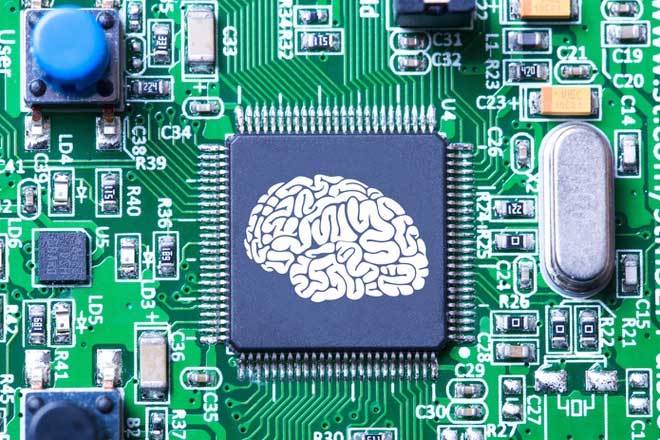The chip helps turn smartphones into supercomputers
Researchers at MIT have successfully developed a type of 'memristors' artificial synapses with the most powerful processing performance ever.
Made of silicon with tens of thousands of artificial synapses , the chip simulates the activity of transmitting brain information to process complex AI algorithms while keeping it small and energy efficient.

This micro-nerve chip with thousands of memristors inside can capture large amounts of data, or recreate and blur image details. (Image: Getty Images).
The special feature of this 'neural microprocessor' , compared to previous versions, is that it does not need to be connected to the data center and can still operate stably, thereby bringing effective memory and storage. High resolution image.
The team aims to expand the artificial neural network based on software and powerful GPU capable of multi-tasking. As a specialized hardware, they can be integrated into mobile devices such as phones and cameras.
Unlike many traditional semiconductor chip lines that can only switch between two data states (0 or 1), artificial synapses can provide a range of values equivalent to brain memory. It can learn working statuses and quickly reproduce the old signal for the same current flowing many times.
Reportedly, the team has applied a concept in the field of metallurgy: When metallurgists want to change the metal properties, they will combine with another substance with the desired properties to create alloys.
Similarly, the researchers used a chemical element in combination with silver, the material used to make memristor anodes, to increase the ability to continuously move ions in a thin channel.
Overall, this area still has a long way to go, but partly sees the future of artificial neural computers, which can do a lot of complex tasks on supercomputing scales without consuming a lot of power. Quality and network connectivity.
- 2 US representatives topped the list of the world's fastest supercomputers
- Based on user fingers, this algorithm knows whether children or adults are using smartphones
- India makes smartphones for the blind
- Microchip electronics for perfect supercomputers
- Built-in chip reads genetic information to the smartphone
- IBM dominates the list of Top 500 supercomputers
- IBM BlueGene leads the Top 500 supercomputers
- New research turns smartphones into virus and infection testing devices
- Manufacturing supercomputers helps people do incredible things
- Successfully manufactured the first optical-electronic chip in the world
- Development of RFID chip 'not hackable'
- Video: The mixture helps China turn desert into cultivated land
 The US company is about to build a supersonic passenger plane of 6,000km / h
The US company is about to build a supersonic passenger plane of 6,000km / h Japan develops avatar robot as in fiction film
Japan develops avatar robot as in fiction film Australia tested the world's first mango picking robot
Australia tested the world's first mango picking robot America develops technology to separate water from animal waste
America develops technology to separate water from animal waste